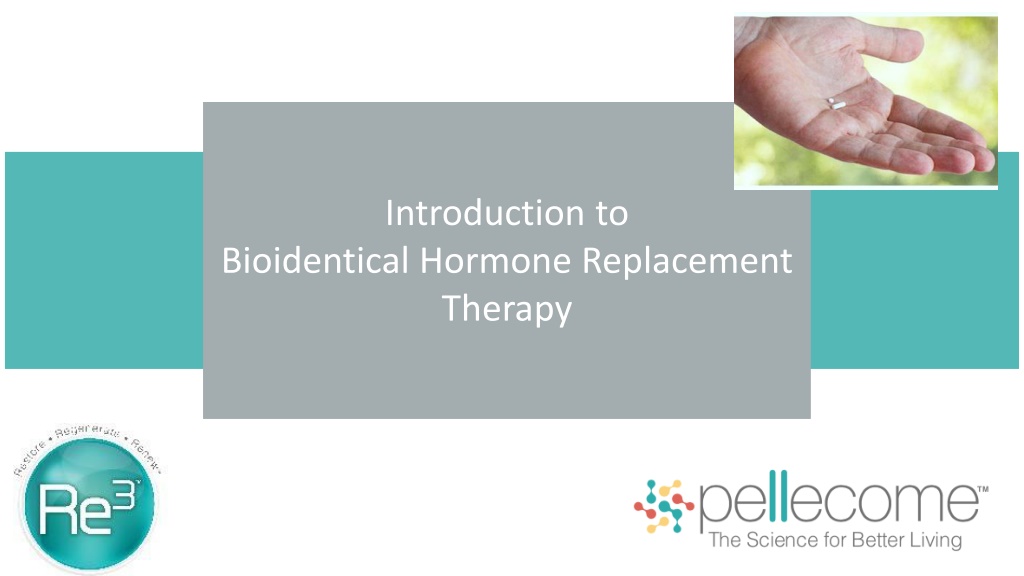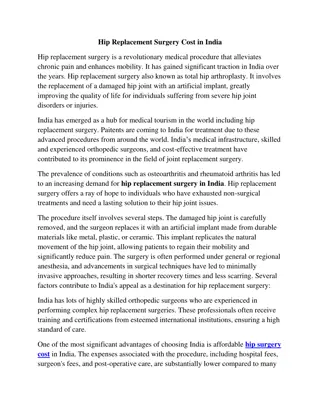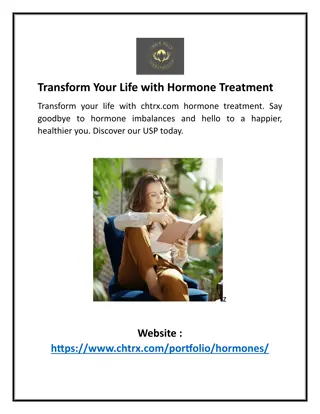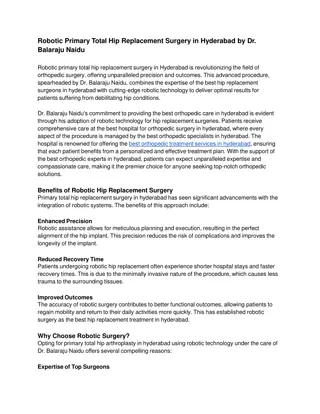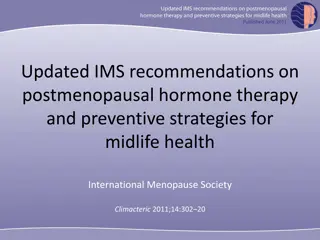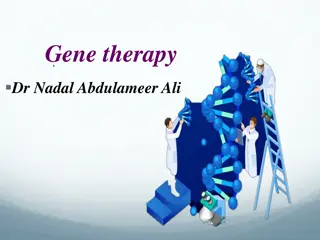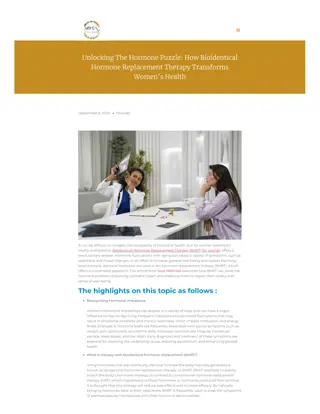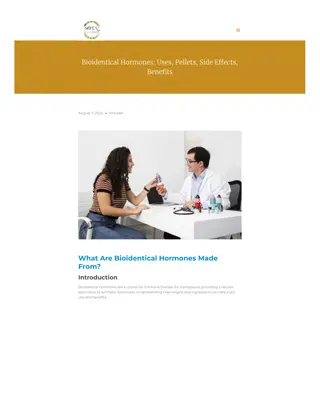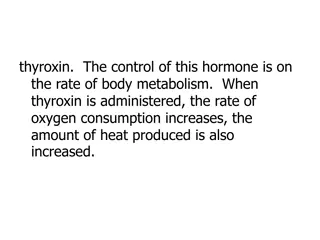Bioidentical Hormone Replacement Therapy
Bioidentical Hormone Replacement Therapy (BHRT) involves using compounded hormones that are chemically identical to the hormones in the human body. Customized compounded bioidentical hormones offer flexible dosing based on individual needs, with growing clinical validation for hormone optimization. Research indicates that bioidentical hormones may provide better symptomatic relief and quality of life compared to synthetic hormones, with potentially lower risks, especially in relation to breast cancer.
Download Presentation

Please find below an Image/Link to download the presentation.
The content on the website is provided AS IS for your information and personal use only. It may not be sold, licensed, or shared on other websites without obtaining consent from the author.If you encounter any issues during the download, it is possible that the publisher has removed the file from their server.
You are allowed to download the files provided on this website for personal or commercial use, subject to the condition that they are used lawfully. All files are the property of their respective owners.
The content on the website is provided AS IS for your information and personal use only. It may not be sold, licensed, or shared on other websites without obtaining consent from the author.
E N D
Presentation Transcript
Introduction to Bioidentical Hormone Replacement Therapy Enrique Jacome, MD, FACOG
Why Compounded Hormones? Bioidentical hormones: Regulated vs customized compounded (FDA) Prescription-regulated bioidentical hormones Customized compounded bioidentical hormones Chemically identical to human hormones Chemically identical to human hormones FDA Marketing Application No FDA application, regulate with 503B Published scientific research Published scientific research Doses exactly reproducible Doses flexible based on need Proven efficacy for indicated use Growing volume of clinical validation for hormone optimization Pattimakiel, L., & Tacker, H. (2011). Bioidentical hormone therapy: Clarifying the misconceptions. Cleveland Clinic Journal of Medicine, 78(12), 829-836
Bioidentical Hormones The B in BHRT stands for bioidentical . Defined by Endocrine Society as compounds with EXACTLY the same chemical and molecular structure as hormones in the human body Any modification in the compounding process can create changes in the drug structure; this is a biosimilar Synthetic identical hormones [McCamish Clinical Pharmacology & Therapeutics 2012 /p409 A; Files Mayo Clin Proc 2011 /p674 A]
Bioidentical Hormones vs Synthetics Do bioidentical hormones work better than synthetics? Meta-analysis done by Holtorf in 2009 Symptomatic Relief and QOL Progesterone versus progestins 30% reduction in sleep issues 50% reduction in anxiety 60% reduction in depression 30% reduction in somatic symptoms 25% menstrual bleeding 40% reduction in cognitive difficulties 30% improvement in sexual function OVERALL 65% felt it worked better Holtorf, K. (2009). Are bioidentical hormones (estradiol, estriol, and progesterone safer or more efficacious that commonly used synthetic version in hormone replacement therapy? Postgraduate Medicine, 121(1). https: //doi.org/10.3810/pgm.2009.01.1949
Bioidentical Hormones vs Synthetics Breast Cancer Risk Synthetic progestins increase estrogen stimulated mitotic activity and proliferation in the breast while progesterone inhibits it WHI showed synthetic progestin increased risk for breast cancer. Nurses Health Study showed a 60% increase in breast cancer when progestin was added to estrogen Holtorf, K. (2009). Are bioidentical hormones (estradiol, estriol, and progesterone safer or more efficacious that commonly used synthetic version in hormone replacement therapy? Postgraduate Medicine, 121(1). https: //doi.org/10.3810/pgm.2009.01.1949 Holtorf, H. What s the difference between bioidentical HRT and synthetic HRT? + Which one is better? Holtorf Medical Group
Bioidentical Hormones vs Synthetics Cardiovascular Risk From WHI study when Progestin was added to Premarin resulted in substantial increase on the risk of stroke and heart attack Progestin reduces HDL, Increases vasoconstriction, promotes atherosclerotic plaque formation PEPI trial showed estrogen and progesterone improved HDL over estrogen and medroxyprogesterone Holtorf, K. (2009). Are bioidentical hormones (estradiol, estriol, and progesterone safer or more efficacious that commonly used synthetic version in hormone replacement therapy? Postgraduate Medicine, 121(1). https: //doi.org/10.3810/pgm.2009.01.1949 Holtorf, H. What s the difference between bioidentical HRT and synthetic HRT? + Which one is better? Holtorf Medical Group
Synthetic Estrogen BIOIDENTICAL NON BIOIDENTICAL 17-beta estradiol Conjugated Equine estrogen (CEE) Premarin Oral Estrace Equilin sulfate native to horses and estrone sulfate Patch Vivelle, Climara, Alora, Fempatch, Menostar Gel Estraderm, Estrogel, Divigel, Elestrin Emulsion Estrasorb Spray Evamist Vaginal Cream Estrace vaginal Ring Estring Estradiol acetate Oral Femtrace Vaginal ring Femring Estradiol hemihydrate Vaginal Vagifem Estropipate Ortho E Pattimakiel, L., & Tacker, H. (2011). Bioidentical hormone therapy: Clarifying the misconceptions. Cleveland Clinic Journal of Medicine, 78(12), 829-836 Chart from www:menopause.org with permission of North American Menopause Society
Menopause Population 6000 women reach menopause every day 27 million women between ages 45-64 suffer menopausal symptoms Represents 20% of the workforce Anticipated to grow 4.2% annually over the next 5 years (through 2023)
Prescriptions for Hormones Compounded vs FDA approved Management of hormone insufficiency is changing Trend to transition to Bio-Identical Hormones The Rose study showed 2.5million US women >40 may use compounded hormone therapy annually accounting for 28-68% of hormone therapy prescriptions. Reported sales $1.3-1.6 Billion Menopause, 2016. Apr, 23(4): 359-67
Low Testosterone Low testosterone affects 40% of men aged 45 and older Rates increased with rising rates of diabetes, obesity, COPD, chronic kidney disease, HIV, and opioid dependence. Population based studies show hypogonadism in men 47-60 ranges from 2.1% to 12.8%. It rises to 38.7% in primary care/ screening studies. Incidence with comorbidities went as high at 78.8% Although treatment is increasing, it continues to be only 10-12% of men with hypogonadism get treated. Bayer Research News 2015. Testosterone Deficiency Prevalence and Treatments Rates.
Pellecome Objectives Founded by Dr. Enrique Jacome who has over 30 years of experience in hormone management and over 30,000 insertions. Our goal was to completely re-design the surgical device and refine the surgical technique. Additionally we sought to improve the manufacturing process in such a way that it would meet or exceed FDA expectations for standardization Train and educate medical personnel on the use of implants as an option for long lasting hormone replacement therapy Become the largest distributor of FDA approved manufactured pellets around the globe
